Story and photos by Anita Westervelt, Texas Master Naturalist
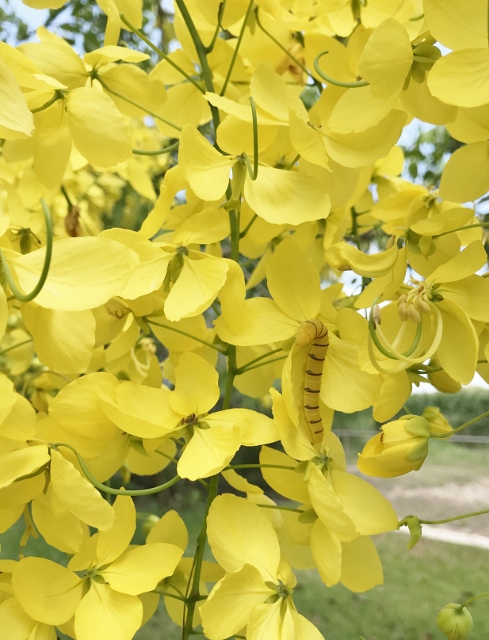
While you’re perhaps still staying close to home — and looking for new activities as springtime turns to summer — be on the lookout for caterpillars, they may be anywhere.
Surprisingly, the now-blooming yellow cascades of lluvia do oro (Cassis fistula) may be full of yellow-colored caterpillars. As the caterpillars grow, they will be more noticeable among the yellow blooms by exhibiting horizontal black stripes across their backs.
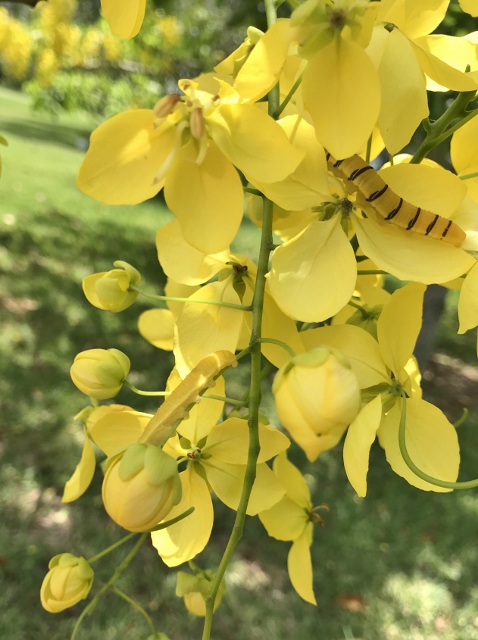
These yellow caterpillars are the larvae of the cloudless sulphur butterflies which use cassis and senna plants as host plants; both species are in the pea family (Fabaceae) as is the lluvia de oro tree.
Also called golden shower tree, lluvia de oro is native to Egypt and warm areas of Asia. A large, fast-growing tree, it has acclimated itself nicely to our sub-tropical Valley climate.
Interestingly, when cloudless sulphur caterpillars eat the yellow blooms, their body is yellow. When they eat the green leaves, they change to the color of the leaves, according to butterfly-fun-facts.com.
Each species of butterfly uses a specific plant or plants where the adult female lays eggs and the subsequent caterpillars eat the leaves, buds and flowers. Caterpillars go through a few growth stages before spinning a chrysalis and finally emerging as a beautiful winged insect.
When searching for caterpillars, there are a couple of obvious clues as to whether a plant you are looking at is feeding caterpillars. A good clue is if a leaf looks like it has been chewed at the edges or has holes in the center of it. Look around the plant and see if you can spot what might have been feeding on it. In some instances, check the underneath of a leaf with holes.
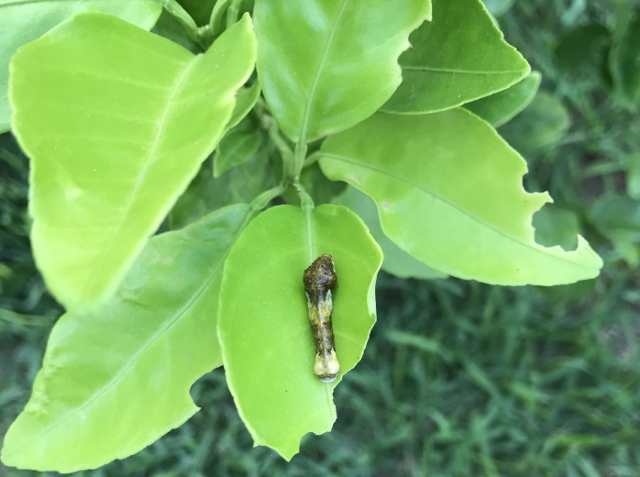
Another clue is the presence of frass. Frass is caterpillar waste, generally on the topside of a leaf. Look above that area to see if a caterpillar is munching away.
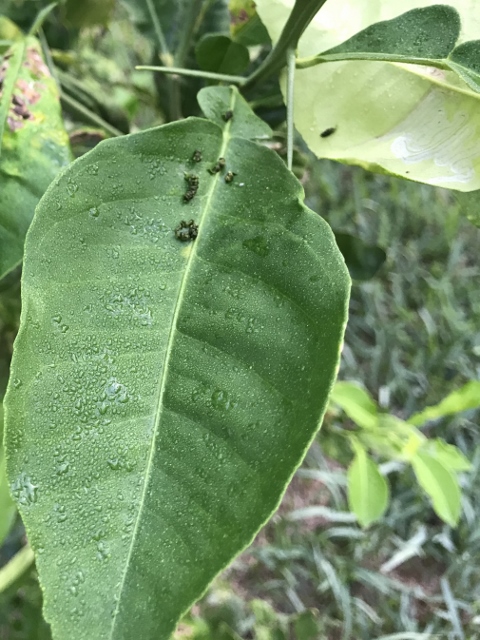
If you have citrus trees in your yard or neighborhood, fun larvae to look for are the caterpillars of the giant swallowtail butterfly. These caterpillars are easily overlooked by a casual observer because, in displaying a brilliant guise of camouflage, these caterpillars resemble what could be mistaken as a large bird dropping on the top of an otherwise pristine leaf.
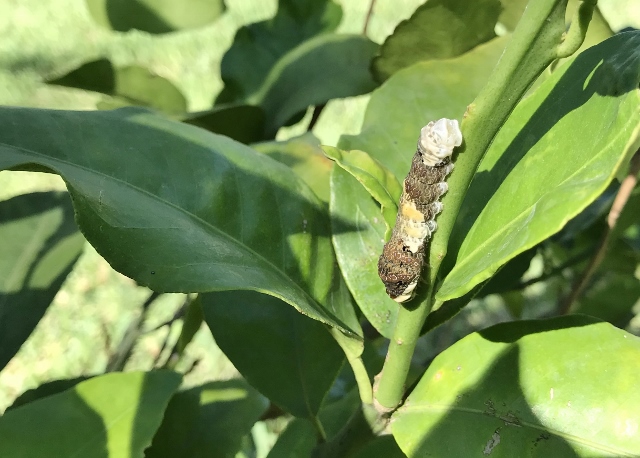
If you’re in the know, these splotchy caterpillars are easily found just after sunrise while they’re still in their night-time resting mode. As the caterpillars go through their growth stages, the markings will change. Caterpillars go through stages of growth; each stage is called an instar. When a caterpillar reaches a certain size, it will become immobile, molt and then progress to the next instar. Many butterfly caterpillars have five instar stages.
Other local host plants for the giant swallowtail caterpillar are in the rue (Rutaceae) family. They are the herb called rue, and a native tree, colima, (Zanthoxylum fagara) also called lime prickly ash. Citrus, also in the Rutaceae family, are not native to the Valley; they are an introduced species.
